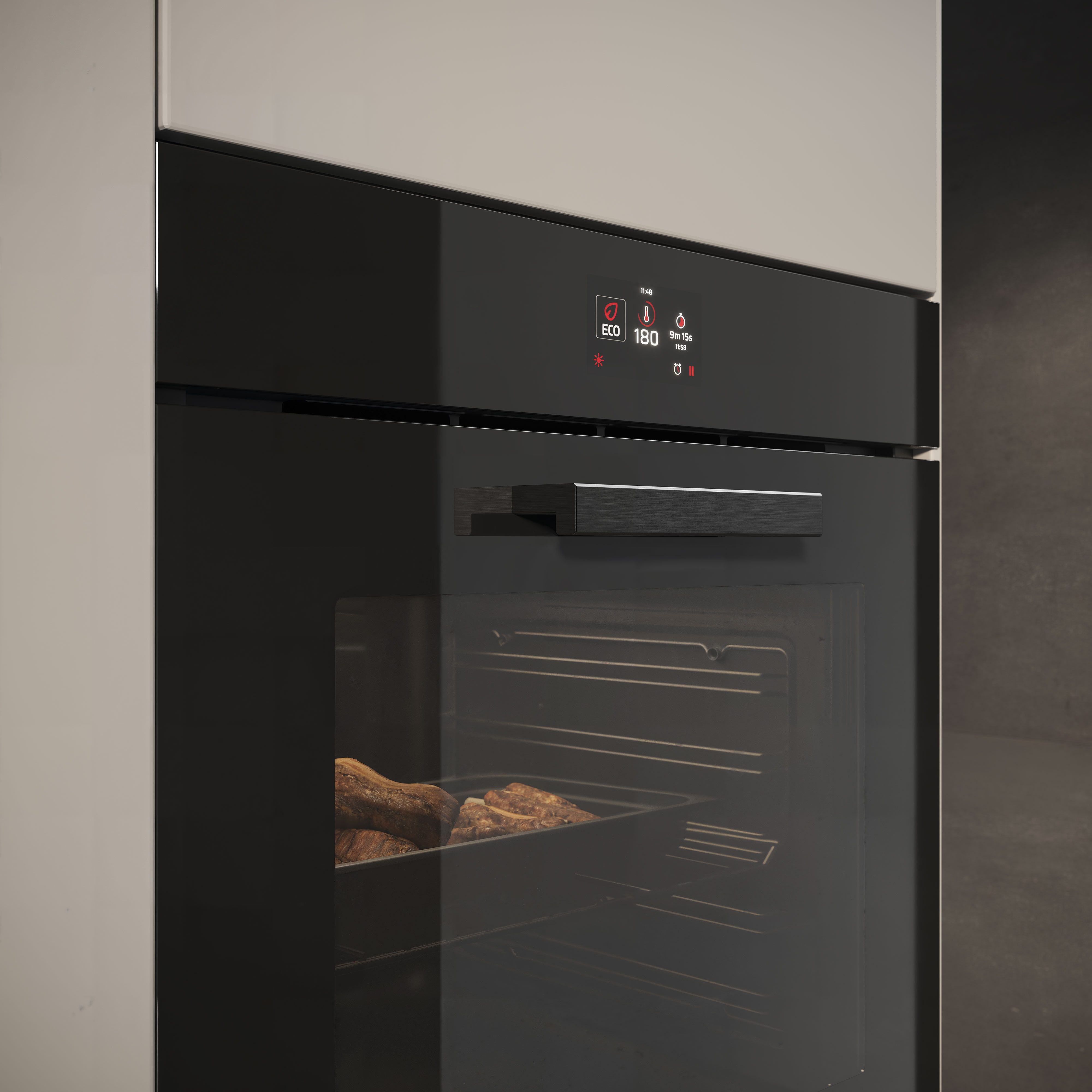
There’s nothing better than taking a pizza, roast, or cake out of the oven...until it’s time to clean up! Oven cleaning can be a tedious task that usually requires time, effort, and lots of elbow grease. Luckily, today's most advanced ovens come with a much-appreciated feature: self-cleaning technology. In other words, they are literally capable of cleaning themselves.
Built-in self-cleaning oven: what does that mean?
A self-cleaning oven is a latest-generation appliance that falls into the category of built-in ovens, which differ from freestanding ovens. But what's the difference?
-
Built-in ovens are integrated into kitchen units. They are often installed beneath the hob but can also be positioned elsewhere.
-
Freestanding ovens are standalone units that can be placed anywhere in the kitchen
Built-in ovens offer a sleek and modern aesthetic, making them the most sought-after choice. They are available in a wide range of models to suit different space and cooking needs. Freestanding ovens, on the other hand, are becoming less common. This is why there is a smaller selection to choose from, and they typically have lower performance levels.
Another key difference is how ovens are powered: gas-powered models are increasingly being replaced by electric-powered models: these are safer and can even be installed far from the hob.
Built-in self-cleaning oven: other features
There are many self-cleaning oven models to choose from, allowing you to find the perfect match for your kitchen and cooking style. The key factors to consider are:
-
size: compact (60 x 45 cm), standard (60 x 60 cm) or extra-large (90 x 48 cm)
-
type: options include self-cleaning conventional ovens (which use heating elements to generate heat), self-cleaningconvection (fan) ovens (equipped with a fan that helps circulate hot air throughout the oven), steam-cleaning ovens (with a boiler that creates steam, which is then released into the oven cavity)
-
functions such as grill mode (a heating element on the top of the oven that reaches high temperatures to brown and crisp food) or microwave function (which emits microwaves that are absorbed by water molecules in food, allowing it to cook quickly).
Important: Convection (fan) and steam ovens require less time and lower temperatures than conventional ovens. This means they use less energy, reducing both utility costs and environmental impact.
Self-cleaning oven: pyrolysis
A self-cleaning oven is also known as a pyrolytic oven, as it operates using pyrolysis. This is a process that uses high heat to burn off residues remaining in the oven after baking (e.g. splatters, crumbs, bits of food, grease drips, etc.). A self-cleaning oven literally burns organic residue to ash, sanitising the oven racks and cavity.
When the self-cleaning function is activated, the pyrolytic oven reaches temperatures of up to 500°C, burning off all food residue to ash. Once the cycle is complete, all you need to do is wipe away the fine ash with a damp cloth for a sparkling clean oven. Less work, more free time to enjoy!
Pyrolytic self-cleaning oven: advantages
A pyrolytic oven not only cleans itself, but also offers a number of additional benefits:
-
enhanced hygiene: the high heat eliminates germs, bacteria, mould, and other microorganisms
-
less impact on the environment: no pollution because no detergents (let alone solvents or aggressive chemical cleaners) need to be used.
-
peace of mind: the self-cleaning function runs autonomously and automatically, with no need for constant monitoring
Steam-cleaning oven
Some ovens use steam to facilitate cleaning the oven cavity. Steam softens baked-on crud, grease, and food residues, making them quicker and easier to remove. This system uses less energy, reducing both power consumption and utility bills.
Note: Some models offer multiple cleaning programmes, allowing for a quick, light clean or a more intensive deep clean.
Hydrolytic self-cleaning oven
Another effective self-cleaning process for ovens is hydrolysis, which works by combining evaporation and condensation. The process involves pouring a small amount of water with a few drops of detergent onto the floor of the oven and then starting the cycle. Baked-on food and residues soften in just a few minutes and detach from the racks and walls. Simply wipe with a soft cloth to remove the softened debris.
Self-cleaning oven: final thoughts
A self-cleaning oven is an essential addition to any kitchen. That’s why Elica offers a range of high-performance self-cleaning models, designed to suit any kitchen layout while incorporating innovative features (such as temperature and humidity control). All with a black glass design that enhances any kitchen space.
